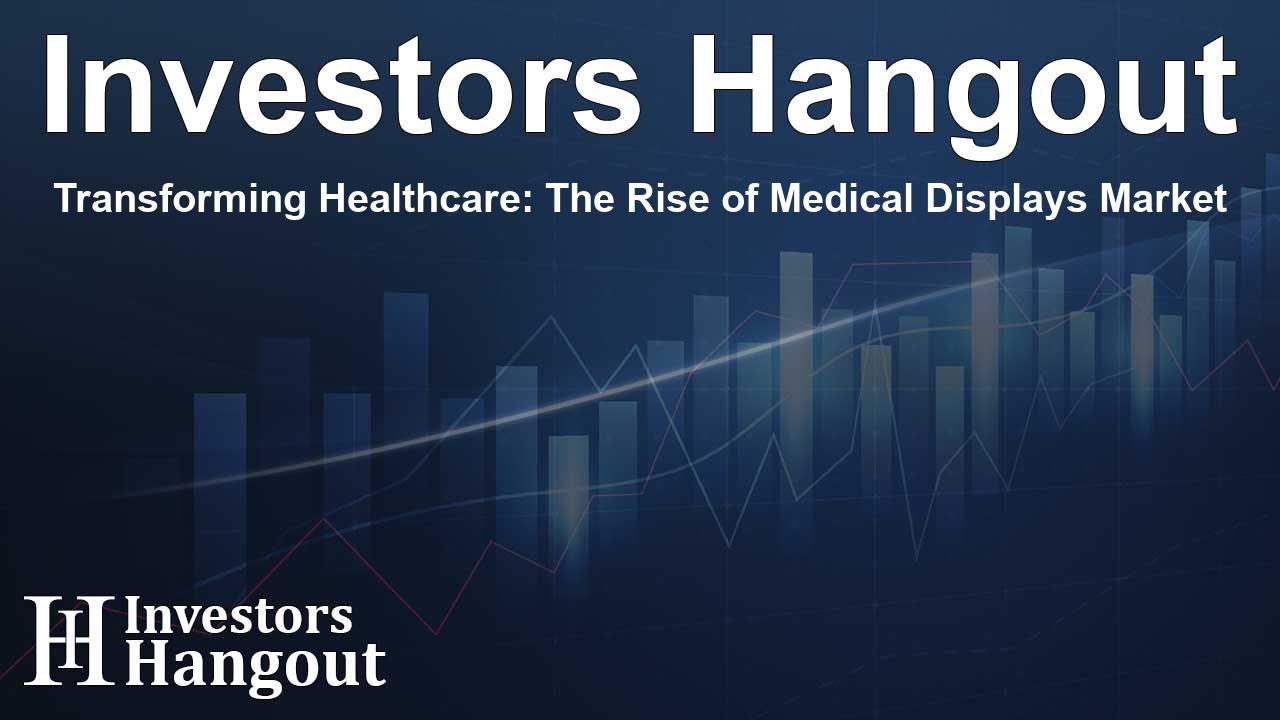Transforming Healthcare: The Rise of Medical Displays Market

Significant Growth in the Medical Display Market
The medical display market is on a trajectory for remarkable expansion, anticipated to achieve a revenue of US$ 4,063.8 million in the coming years, up from US$ 2,100.2 million in 2023. This growth represents an impressive compound annual growth rate (CAGR) of 7.61%, fueled by ongoing advancements in technology and the rising complexity of healthcare systems.
Driving Forces Behind Market Growth
Increasing Healthcare Expenditure and Chronic Diseases
A surge in global healthcare spending is projected, exceeding $10 trillion by a certain point, which is driving the demand for sophisticated diagnostic tools like medical displays. The increasing prevalence of chronic diseases—impacting over 1 billion individuals worldwide, particularly those with diabetes and cardiovascular conditions—underscores the need for frequent imaging and higher-quality display systems.
Impact of Artificial Intelligence in Healthcare
The integration of artificial intelligence (AI) and machine learning into healthcare is a key factor influencing the medical display market. With more than 100,000 AI-powered devices operational currently, the demand for displays capable of supporting these complex algorithms is escalating. Additionally, the rise of personalized medicine aims for over $2 trillion in healthcare spending, necessitating advanced displays for precise patient care.
The Evolution of Telemedicine and Remote Healthcare
The Role of Accessibility in Healthcare Delivery
The shift towards telemedicine is revolutionizing how healthcare services are delivered, with over 5 billion internet users globally facilitating remote consultations. This transition necessitates the availability of portable and mobile medical displays. The projected growth of the telehealth market, expected to surpass $250 billion, highlights the essential role of medical displays in enhancing healthcare access.
Advancements in Connectivity and Technology
The advent of 5G technology, with anticipations of over 1 billion connections by a specified point, further bolsters the capabilities of mobile medical displays, allowing for real-time data transmission. These developments are vital for enhancing the quality of remote healthcare services, solidifying medical displays as critical components of modern healthcare solutions.
Key Highlights in the Medical Display Market
The medical display market includes vital statistics that showcase its potential, such as the realization of a $4,063.8 million market forecast for 2032 alongside a CAGR of 7.61%. North America currently dominates the market share, which reflects ongoing technological advancements in medical display systems.
Trends and Challenges in the Medical Displays
One notable trend is the integration of AI to improve image quality and enhanced functionalities. However, challenges remain, including high costs for advanced displays and stringent data security concerns linked to increased connectivity within healthcare environments.
Future Outlook for Hybrid Visual Systems
The prospects for hybrid visual systems within the medical display sector are promising, spurred by ongoing technological advancements. Many healthcare institutions aim to upgrade imaging facilities to include hybrid technologies, pushing for improved diagnostic tools that utilize AI, which can drastically enhance patient throughput by reducing scan times.
OLED Display Technology Adoption
Among the most promising trends, OLED technology stands out due to its unparalleled image quality. With self-emissive pixels resulting in superior contrast ratios and rapid response times, OLED displays meet the demanding requirements of medical imaging. Elite manufacturers like Sony and LG Display continue to innovate in this space, ensuring that OLED displays become essential components in medical imaging.
Asia Pacific Region: A Growing Hub
The Asia Pacific region is witnessing a significant expansion within the medical display market, driven by advancements in healthcare infrastructure and increased digital imaging technologies. With substantial investments in equipment installation and a growing trend towards telemedicine, the potential for growth in this area is immense.
Frequently Asked Questions
What is the expected market size for medical displays by 2032?
The medical display market is projected to reach US$ 4,063.8 million by 2032.
What are the driving factors behind this market growth?
The rise in healthcare expenditure and the increasing prevalence of chronic diseases are primary growth drivers.
How is AI influencing the medical display market?
AI integration enhances image analysis capabilities, necessitating advanced displays that can support complex algorithms.
What trends are shaping the medical display market?
Key trends include the integration of AI, the shift towards telemedicine, and advancements in OLED technology.
What challenges does the market face?
Challenges include high costs for advanced displays and concerns regarding data security in healthcare environments.
About The Author
Contact Riley Hayes privately here. Or send an email with ATTN: Riley Hayes as the subject to contact@investorshangout.com.
About Investors Hangout
Investors Hangout is a leading online stock forum for financial discussion and learning, offering a wide range of free tools and resources. It draws in traders of all levels, who exchange market knowledge, investigate trading tactics, and keep an eye on industry developments in real time. Featuring financial articles, stock message boards, quotes, charts, company profiles, and live news updates. Through cooperative learning and a wealth of informational resources, it helps users from novices creating their first portfolios to experts honing their techniques. Join Investors Hangout today: https://investorshangout.com/
The content of this article is based on factual, publicly available information and does not represent legal, financial, or investment advice. Investors Hangout does not offer financial advice, and the author is not a licensed financial advisor. Consult a qualified advisor before making any financial or investment decisions based on this article. This article should not be considered advice to purchase, sell, or hold any securities or other investments. If any of the material provided here is inaccurate, please contact us for corrections.
